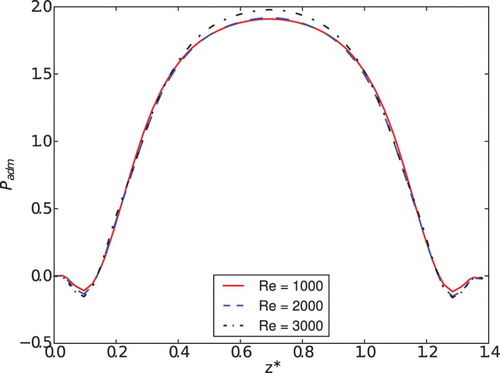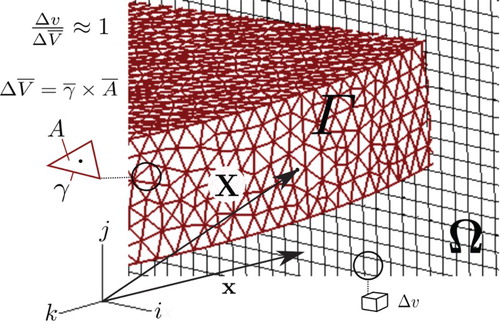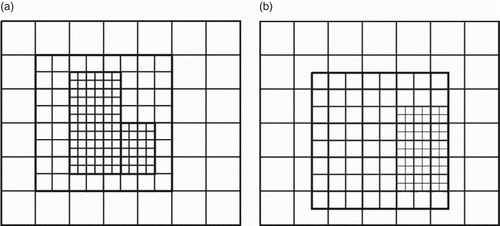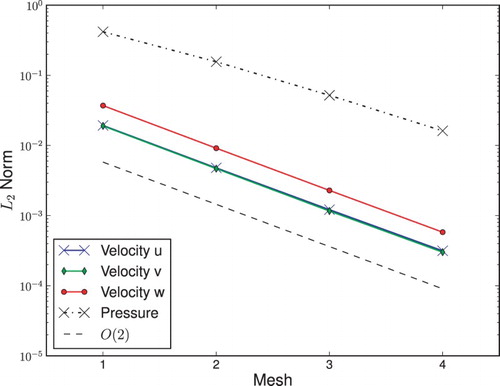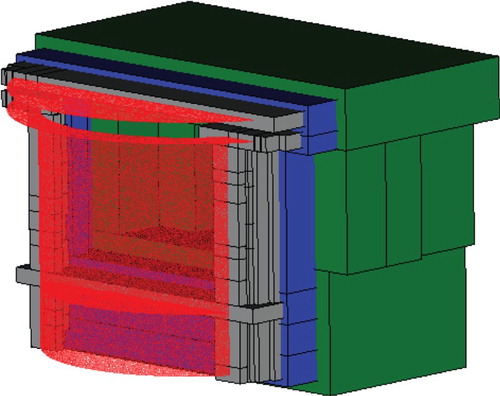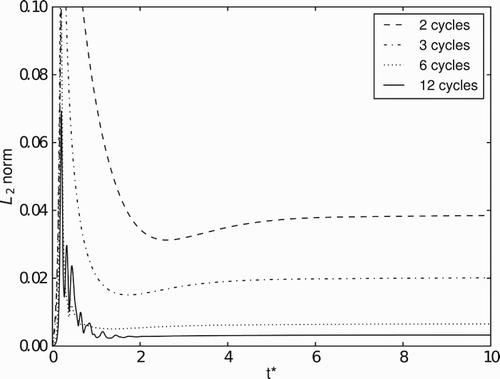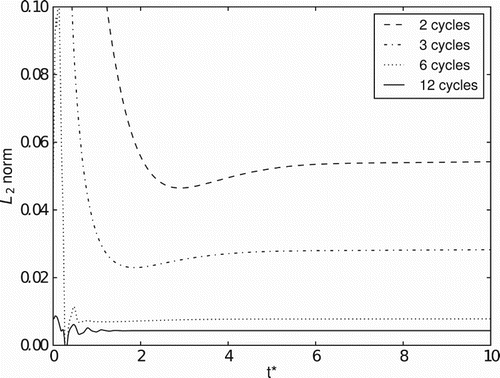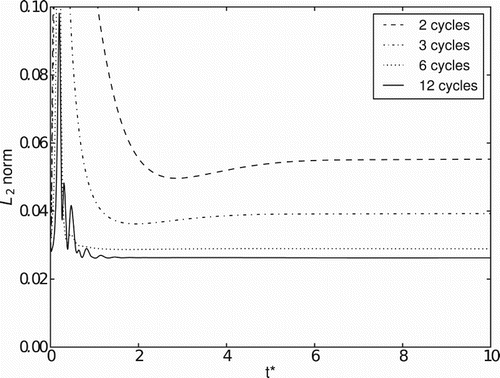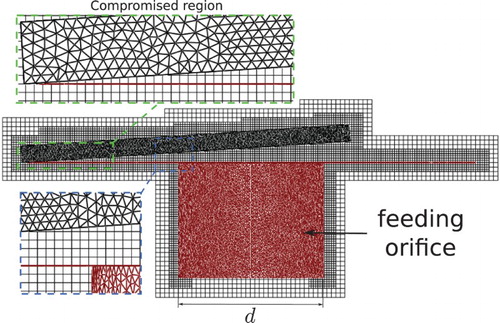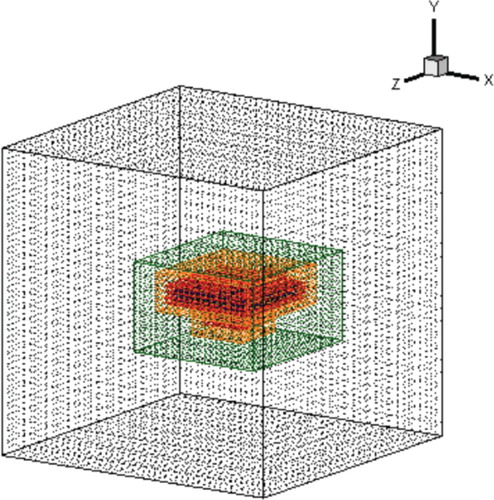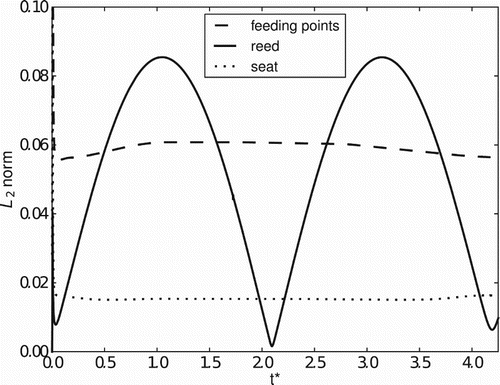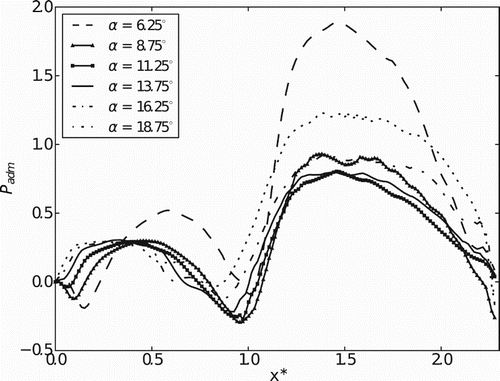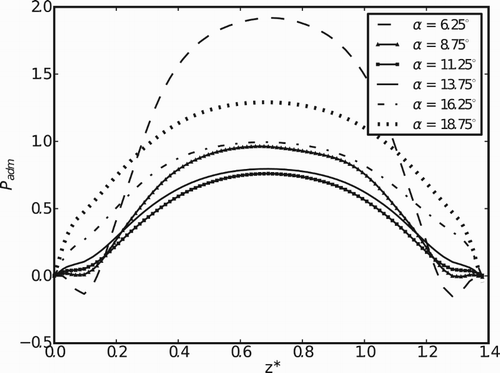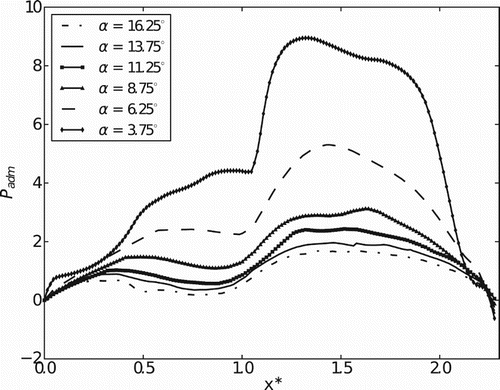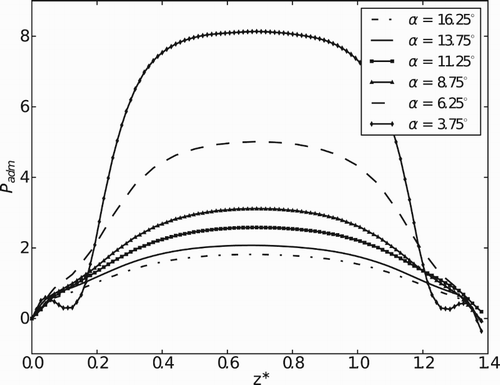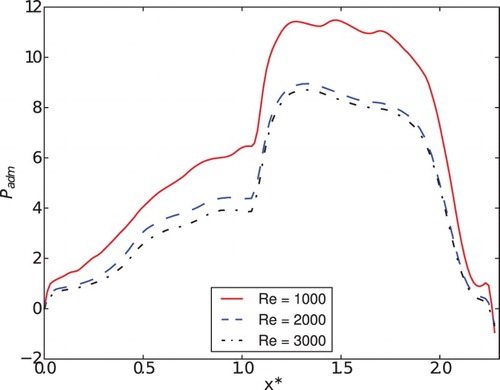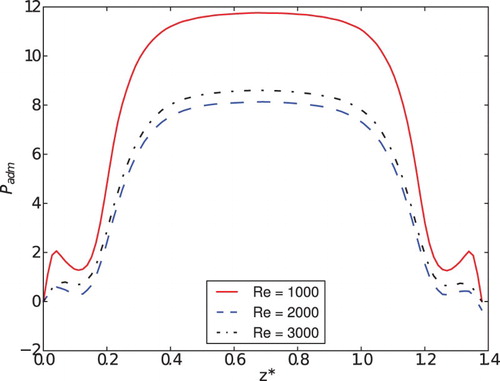Figures & data
Figure 7. Calculation domain to solve the flow through a radial diffuser for the numerical validation.
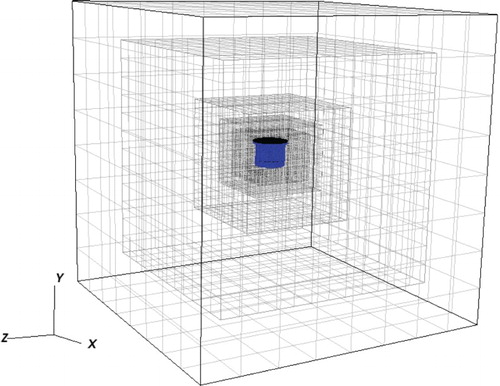
Figure 12. Comparison of pressure profiles obtained in the present simulations with experimental data.

Figure 16. Vector field on a slice passing through the center of the feeding orifice for the opening movement.
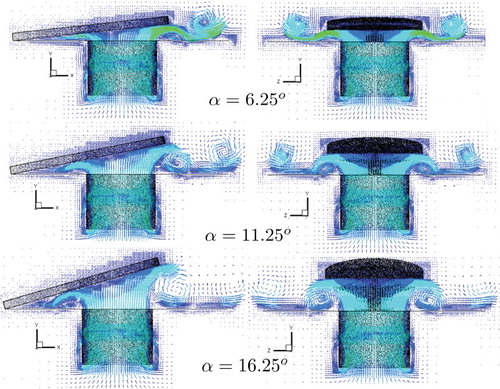
Figure 17. Vector field on a slice passing through the center of the feeding orifice for the closing movement.
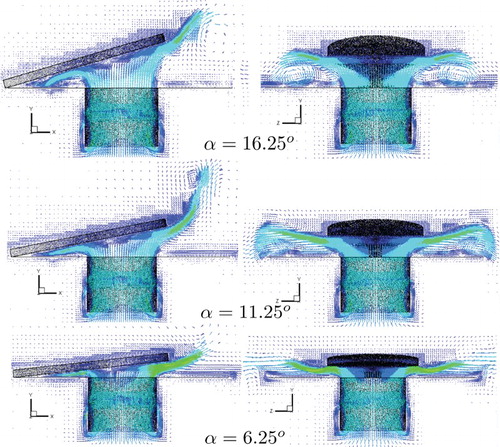
Figure 18. Vector field on a slice passing through the center of the feeding orifice for the opening movement for different Reynolds numbers.
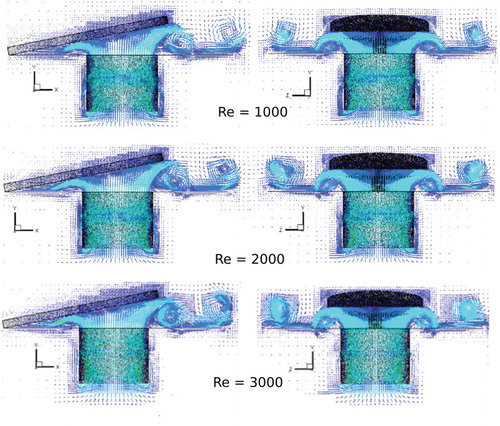
Figure 19. Vector field on a slice passing through the center of the feeding orifice for the closing movement for different Reynolds numbers.
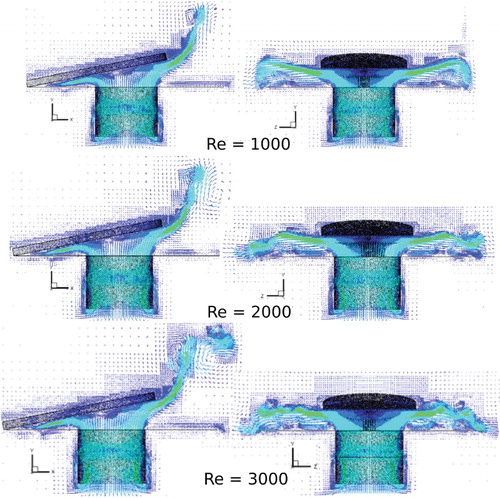
Figure 20. Pressure field at a z plane passing through the center of geometry for α = 6.25° and Re = 1000.

Figure 21. Pressure field at a z plane passing through the center of geometry for α = 6.25° and Re = 2000.
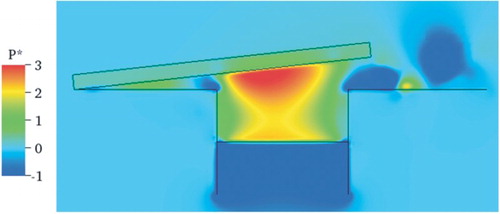
Figure 22. Pressure field at a z plane passing through the center of geometry for α = 6.25° and Re = 3000.
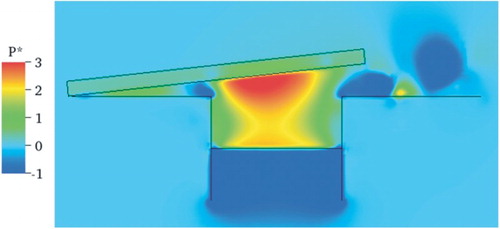
Figure 27. Pressure profiles in x* for the opening movement for different Reynolds numbers and α = 6.25°.
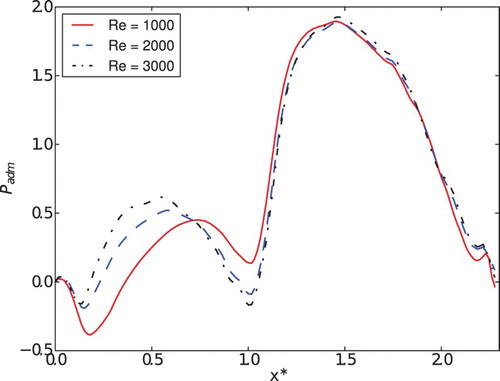
Figure 28. Pressure profiles in z* for the opening movement for different Reynolds numbers and α = 6.25°.
